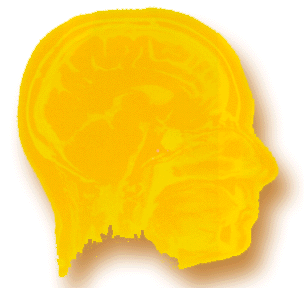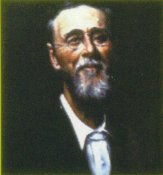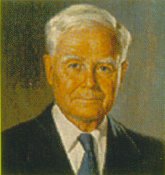Cranial osteopaths spend four and up to seven years learning their profession. As long as any Doctor. At one level the osteopathy benefits can help improve posture and energy flow throughout the body. This energy flow can be developed further as cranial osteopaths are also trained to move energy, rebalance it and deliver it to where it is needed. Its a small step from Cranial Osteopathy to Hands on Healing.

Alternative therapies sometimes seem mysterious and even slightly alarming and cranial treatment is no exception. "Something slightly bone-crunching, since its practised by specialist osteopaths" you might hazard.
On the contrary, cranial treatment is a gentle, hands-on technique designed to re-balance the stressed body and encourage its innate powers of healing. Cranial osteopaths believe that the flow of spinal fluid in and around the nervous system creates its own body rhythm, distinct from, but no less vital to, health than your heartbeat or breath.
Cranial osteopathy can restore wellbeing and assist natural healing after the hospital.
Through their hands, cranial osteopaths can feel this rhythm and its subtle changes beneath the bones and membranes of the human body.They dont use their hands to manipulate; they palpate the head and body so lightly that even restless babies benefit and often begin to sleep sweetly after treatment.
So how can the technique help those with cancer? "By dealing" says Nicholas Handoll, a practitioner and founder of the Sutherland Cranial College "not with disease or syndrome, but with whole body health. Cranial osteopathy allows the body to make changes to improve its mechanical function and make it operate more effectively." "We do not diagnose, offer a cure or any substitute for conventional surgery, chemo or radiotherapy" stresses Philip Owen who practises in South Manchester. "But we can help restore wellbeing to newly diagnosed patients and enable natural healing after hospital physicians have done their work. Physicians in the medical professions concentrate on disease. Osteopathic physicians concentrate on health. I believe that, given the right encouragement, the body is capable of immense regeneration and that there is health deep within us all."

Cranial osteopathy allows the body to make changes to improve its mechanical function and make it operate more effectively

When somebody discovers they have cancer, says Philip "Theres a huge shock to the system. Usually that shock can be felt, to the palpating hand, as a tension within the tissues. That in itself can be detrimental to the patients physiology. Its quite rare for members of the medical profession to look on cranial osteopaths as being of help in this traumatised situation, though I think it will come. So most people I see at this stage are either having treatment with me already or come to me through word of mouth. A woman with breast cancer, for example, who has already been through mammography, biopsy and confirming consultation is now very worried. At this stage I would choose not to treat the cancer-affected area at all. There is no proof one way or the other, but one is very careful indeed not to risk increasing the spread, by stimulating the circulation around the chest.
I can, however treat the general condition of shock. That woman may need support in her tissues; she may need the whole body gently reba lancing to address some of the fear and tension. This stage is not going to be an easy ride for anybody with cancer, but bringing those fears and tensions to the surface so that they may be able to talk about them (which in itself can bring relief) is better than burying them." Each actual treatment takes about 30 minutes and usually involves palpation of the sacrum, legs, pelvis, abdomen and chest before Philip balances the head.
After Hospital Treatment
Cranial osteopathy can relieve the effects of tissue damage or scarring particularly after radiotherapy and/or surgery. Says Philip: Very often after a mastectomy or Iumpectomy, the tissues in the upper thorax, at the bottom of the neck and the diaphragm appear in a state of trauma and hypertension. By releasing the tensions in those areas we can revitalise those tissues which helps considerably not only in the healing process but in lymphatic drainage and supporting the immune system. Emotionally too, we can help: patients often seem to regard the areas that have been operated on or subject to therapy as almost foreign to them, and craniosacral work is a way of reintegrating that part of the body with the rest. Im working with one woman who recently had a Iumpectomy with lymph glands removed too, and treating her for a swollen arm and armpit with tightness around the chest. She feels much better after each treatment."

 Dr. Andrew Still / William Sutherland
Dr. Andrew Still / William Sutherland
Principles Of The Founding Fathers
Modern cranial osteopathy developed from the work of pioneer osteopath Dr Andrew Still, an American civil war veteran who lost three children to meningitis and one to pneumonia.
Seeking kinder medical methods than bleeding, blistering and purging, Still drew on alternative practises of the day such as bone setting, hydropathy and homeopathy to research a new way of healing - manipulation to improve circulation and correct altered mechanics.
Soon 400 people a day were travelling the Wabash railroad for treatment at his first School of Osteopathy at Kirksville, Missouri.
Stills philosophy of medicine focused on the unity of all body parts, on exercise and good diet, a belief that the musculoskeletal system is a key element of health, and that the body is naturally self-healing.
Still died aged 89 in 1917. His student William Garner Sutherland developed the idea that the skull was not a rigid bony structure, but composed of parts that move and shift (a little like the earths tectonic plates) to allow the rhythmic fluctuation of fluid beneath.
This Business Of Balance
Cranial osteopaths talk about a state "good physiology" when the whole body is in balance left and right, top and bottom, front and back, inside and out. "This balanced situation helps the immune system, helps the tensions around the central nervous system," says Philip Owen. "In other words its like a car going down the road not having to travel with the handbrake on." If that handbrake is on, then a cranial osteopath will "hear" it through his hands.

Its a unique pulsation that carries its own feelings

"By gently putting your hand on the surface of the body, and more or often than not this includes the surface of the skull, it is possible to feel a gentle, rhythmical fluid movement" says Philip. "This is thought to arise from the movement of cerebro-spinal fluid around the nervous system. Its a unique pulsation that carries its own feelings and is affected if a blockage arises. The cranial osteopath can make an assessment of the patients vitality and wellbeing and of stresses in the system by feeling this pulse." Philip says he would never seek to take control of his patients or the symptoms he perceives. Hands-on palpation is much more subtle than that. "For the practitioner its a very passive process: I listen with my hands and through them Im accepting all sorts of information.
The body itself will direct the treatment, guiding you to areas that need the work."
Seeing Through The Hands
How does a cranial osteopath recognise the bodys trouble spots? "Your hands are the tools that give you a picture of what is going on underneath them. To return to the motoring metaphor, its rather like a car mechanic listening to an engine. He can hear whether its the engine that doesnt sound right or whether its the tappets, the exhaust or the fan belt - he focuses in on the noise that doesnt sound normal. When holding somebodys head there is a feeling of normality - or not - and if the answers not, then Im asking why not?" After treatment the tuned body operates more efficiently like a tuned motorcar going more "sparkily" and using less fuel. Says Philip "I worked with a lady who had cancer of the parotid gland - the gland in the corner of the jaw. She had surgical removal, followed by radiotherapy.

Treatment shouldnt just be about saving lives; its also
about quality of life

This left her with weakness in the side of her face, but she also had constant headaches and a feeling of tightness in the operated side of her head. She had an altered sense of smell and taste and her whole head felt totally out of balance - one half of her brain felt very tense and traumatised, almost like a cricket ball, whilst the other side had more the feel of a football. By allowing the fluids around the central nervous system to rebalance themselves I enabled the cricket ball to regain its football feel. This lady immediately felt so much better in her optimism, her ability to sleep and to start getting back to some sort of normality. Treatment shouldnt just be about saving lives; its also about quality of life."
For Philip Owen the beauty of cranial osteopathy is that it makes patient treatment possible at many levels. "Theres the osseous or bony level, the membranous level and the fluid level. Then theres the bio-energetic level and also a spiritual level that you can tune into with individual patients. Illness sometimes allows people to take notice of that other part of the body that has previously been ignored - the spiritual side. It can point you in the direction of things about yourself beyond the superficial and material. And thats the silver lining in the cloud.">
Cranial Osteopaths
Only about 10 per cent of the 3000 osteopaths working In the UK practise the cranial modality. This treatment is still very much in its infancy~ Osteopaths can only specialise in cranial work after qualifying and their postgraduate training is viewed as lifelong. Nicholas Handoll, a founder and teacher at the Sutherland Cranial College explains that just as a tea taster trains his palate and the musician her ear, so the cranial osteopath is trained to develop touch so that he can feel tissue tensions throughout the body. "It takes a great deal of training to tell if the second violins really know what they are doing."
To find a cranial osteopath in your area contact the General Osteopathic Council on 0207 357 6655 or the Sutherland Cranial College on 01291 689908 or log on to the website:http://www.scc-osteopathy.co.uk
Not all craniosacral practitioners are fully trained in osteopathy. The Craniosacral Therapy Association of UK Is another regulating body training people who have a relevant background in chiropractic care, in massage or other body works. To find an accredited craniosacral therapist In your area phone 07000 784 735 or log on to their website at www.cranlosacra.co.uk.